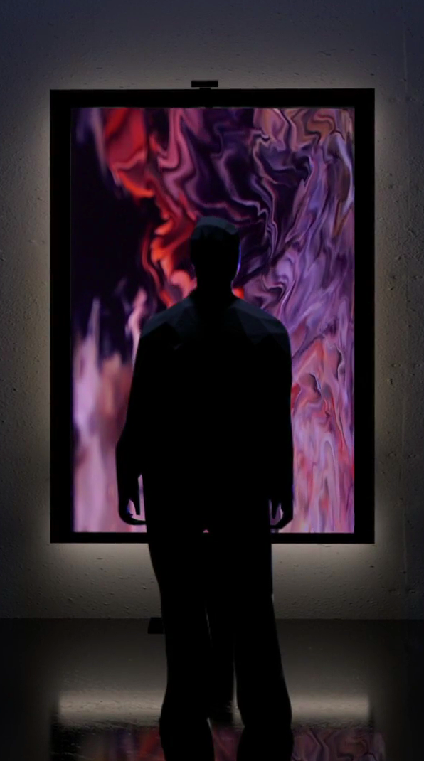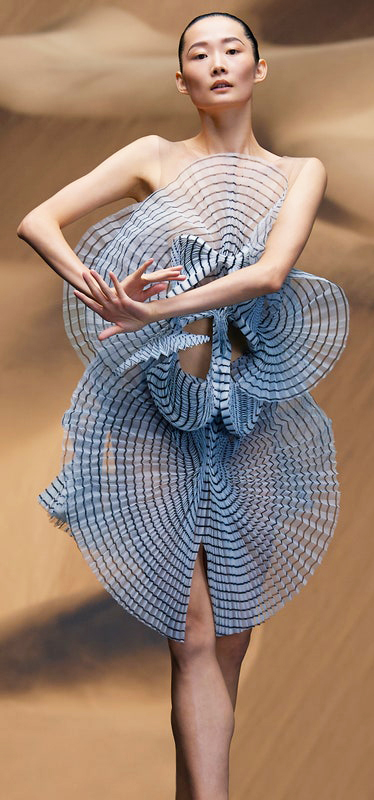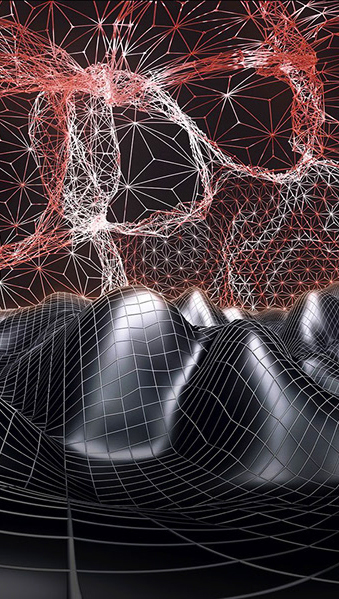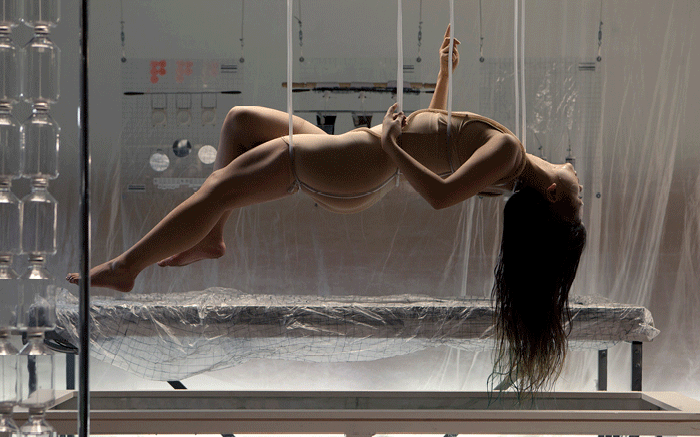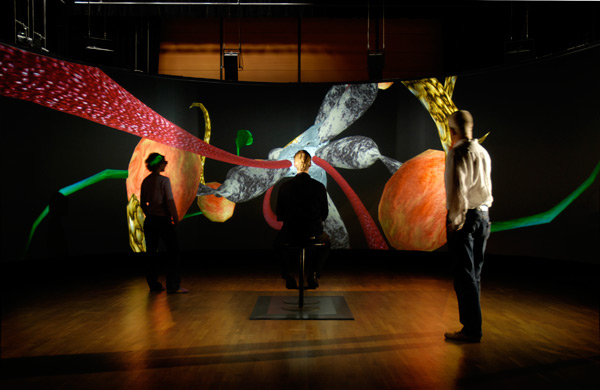Cluster
CLUSTER, la dernière génération d’œuvre audiovisuelle 3D en temps réel de Kurt Hentschläger, se focalise sur le comportement collectif (psychologie, interactions) et plus particulièrement sur le phénomène de foule. La configuration est simple, voire absurde : des personnages humains en 3D apparaissent, comme un banc de poissons. Dans la chorégraphie en apesanteur de CLUSTER, les êtres humains semblent être des particules anonymes, une masse amorphe sous impulsion, un nuage de matière trouble faite de morceaux de corps et de lumière. Visuellement, l’œuvre alterne entre des formes abstraites et réalistes.Par sa nature générative jamais complètement prévisible, CLUSTER, décrit un méta-organisme à caractère irrévocablement anti-individualiste. Alors que les personnages ont une forme humaine, leur comportement ne l’est pas, ce qui empêche la naturelle identification du public à ses alter-egos présumés. Le dispositif informatique permet de définir la nature et le champ de l’action tandis que l’artiste canalise et orchestre les forces en présence.L’œuvre tire son ambiguïté à la fois de ses éléments répétitifs et rythmiques, ainsi que de ses structures « naturelles » improvisées. La majorité des sons de CLUSTER, est produit par les événements qui animent l’œuvre : mouvements et comportements des masses, changements de lumière. Une grille rythmique lie chaque parties entre elles, ce qui donne une impression de pulsion. Les basses fréquences sous les spectateurs et les hautes fréquences les surplombant, encadrent les sons générés par les événements.
